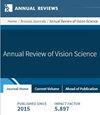Digital Twin Studies for Reverse Engineering the Origins of Visual Intelligence
IF 5
2区 医学
Q1 NEUROSCIENCES
引用次数: 0
Abstract
What are the core learning algorithms in brains? Nativists propose that intelligence emerges from innate domain-specific knowledge systems, whereas empiricists propose that intelligence emerges from domain-general systems that learn domain-specific knowledge from experience. We address this debate by reviewing digital twin studies designed to reverse engineer the learning algorithms in newborn brains. In digital twin studies, newborn animals and artificial agents are raised in the same environments and tested with the same tasks, permitting direct comparison of their learning abilities. Supporting empiricism, digital twin studies show that domain-general algorithms learn animal-like object perception when trained on the first-person visual experiences of newborn animals. Supporting nativism, digital twin studies show that domain-general algorithms produce innate domain-specific knowledge when trained on prenatal experiences (retinal waves). We argue that learning across humans, animals, and machines can be explained by a universal principle, which we call space-time fitting. Space-time fitting explains both empiricist and nativist phenomena, providing a unified framework for understanding the origins of intelligence.数字孪生研究逆向探究视觉智能的起源
大脑的核心学习算法是什么?先天论者认为智力来自于与生俱来的特定领域知识系统,而经验论者则认为智力来自于从经验中学习特定领域知识的通用领域系统。我们通过回顾旨在反向设计新生儿大脑学习算法的数字孪生研究,来探讨这一争论。在数字孪生研究中,新生动物和人工代理人在相同的环境中长大,并接受相同任务的测试,从而可以直接比较它们的学习能力。支持经验主义的数字孪生研究表明,当根据新生动物的第一人称视觉经验进行训练时,领域通用算法可以学习到类似动物的物体感知能力。支持原生论的数字孪生研究表明,当根据出生前的经验(视网膜波)进行训练时,领域通用算法会产生与生俱来的特定领域知识。我们认为,人类、动物和机器之间的学习可以用一个普遍原则来解释,我们称之为时空拟合。时空拟合同时解释了经验主义和本位主义现象,为理解智能的起源提供了一个统一的框架。
本文章由计算机程序翻译,如有差异,请以英文原文为准。
求助全文
约1分钟内获得全文
求助全文
来源期刊

Annual Review of Vision Science
Medicine-Ophthalmology
CiteScore
11.10
自引率
1.70%
发文量
19
期刊介绍:
The Annual Review of Vision Science reviews progress in the visual sciences, a cross-cutting set of disciplines which intersect psychology, neuroscience, computer science, cell biology and genetics, and clinical medicine. The journal covers a broad range of topics and techniques, including optics, retina, central visual processing, visual perception, eye movements, visual development, vision models, computer vision, and the mechanisms of visual disease, dysfunction, and sight restoration. The study of vision is central to progress in many areas of science, and this new journal will explore and expose the connections that link it to biology, behavior, computation, engineering, and medicine.
 求助内容:
求助内容: 应助结果提醒方式:
应助结果提醒方式:


